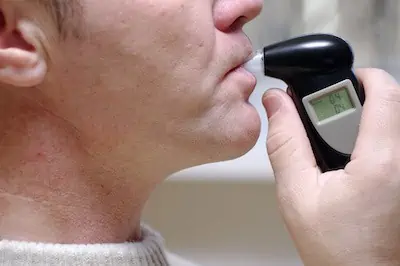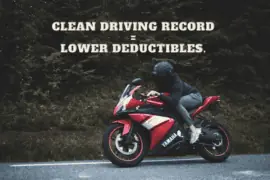With over 8.5 million registered motorcycles in the United States, riders travel over 18 billion miles annually. That’s a lot of open roads to explore, but it also means there are risk factors for accidents.
Although an accident can occur at any time, it is more likely to happen when a motorcyclist has been drinking alcohol or taking drugs before riding.
Didn't You Try Our Quote Comparison Tool Yet? Save BIG by Doing it!
Alcoholic beverages and many prescription medications are legal when acquired appropriately. When they have an adverse effect on a rider’s thinking or judgment, it becomes riskier to ride the bike.
All 50 states have laws that make it illegal to operate a motorcycle while under the influence of alcohol or other substances.
Can You Put a Breathalyzer on a Motorcycle?
About one out of every four motorcyclists involved in fatality accidents had a blood alcohol concentration (BAC) that exceeded the local limit. Most jurisdictions use 0.08% as their standard, but some set it lower, at 0.05%.
Local and federal government policies take active measures to stop impaired driving and riding. Ignition interlocks, which are breathalyzers for motorcycles, are becoming a standard tool to prevent people from hopping onto their bikes to drive while intoxicated.
An interlock device can reduce repetitive DUI offenses by up to 70%. Although it is more common to see them installed in vehicles than on motorcycles, they can be an effective tool when used correctly.
Note that a DUI conviction may increase your insurance by 10%.
How Does a Breathalyzer Work on a Motorcycle?
The interlock ignition device connects to the motorcycle’s ignition system. It features a small mouthpiece that riders must blow into to measure their current BAC.
If the breathalyzer detects a BAC above the limit programmed, the motorcycle will not start its engine for a predetermined time. The only way to get around that lock is to provide a clean sample.
Since a motorcycle is out in the open, a crafty biker could have a friend blow into the interlock ignition mouthpiece to start the engine. Breathalyzer manufacturers have also realized this fact, which is why a “rolling test” is periodically required.
Motorcyclists receive a warning that they must use the breathalyzer another time to ensure the bike continues to operate. If the rider fails, an alarm warns you to stop the engine and provide an adequate sample.
Each interlock ignition device logs every success or failure, the BAC reading, and the GPS location of the motorcycle when the breathalyzer was used. This information is sent to licensing agencies and the local court system.
What Are the Laws for a Breathalyzer on a Motorcycle?
The courts or local licensing agencies can order an ignition interlock device installed on a motorcycle after a DUI or similar offense. Some riders voluntarily install this technology.
It is sometimes required to install an interlock ignition device on every vehicle a rider owns, including all cars and motorcycles.
Five states do not currently have any breathalyzer rules for motorcyclists: Indiana, Montana, North Dakota, South Dakota, and Wisconsin.
Nine states have interlock ignition policies but don’t have specific verbiage regarding their use on a motorcycle. California residents need to refer to their county rules and regulations regarding breathalyzers to know what to expect.
Thirty states have laws requiring first-time DUI offenders to install an interlock ignition device.
Please know that:
The challenge for breathalyzers on motorcycles involves the outdoor environment. This device is exposed to the weather, road grime, engine vibration, and storage difficulties. It even draws power that could impact how the bike is handled.
Interlock ignition devices use auditory signals to indicate the need to retest. That issue creates an additional challenge for motorcyclists to consider.
New technology for bike interlock devices, including visual indicators and weatherproof housing, make it easier to install and use a breathalyzer.
Even with these changes, one truth remains. It’s better not to need an interlock ignition device in the first place. If you’re required to have one installed, please ensure it can withstand the rigors of riding.
Use This Tool for Free and Save on Quotes!






